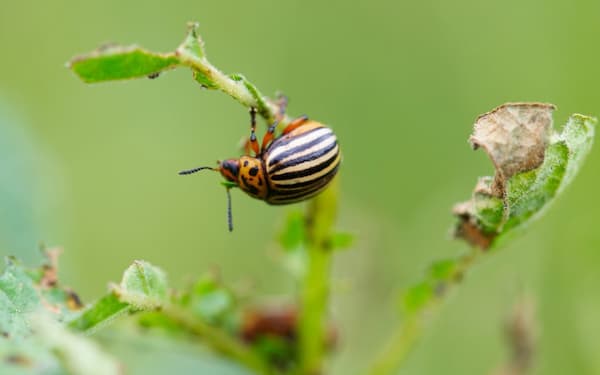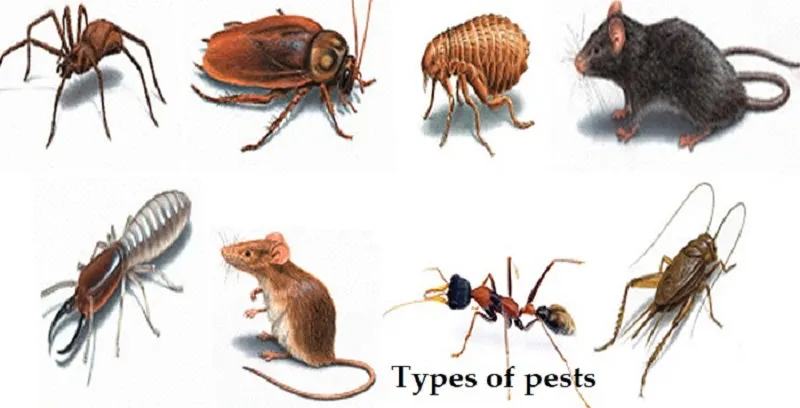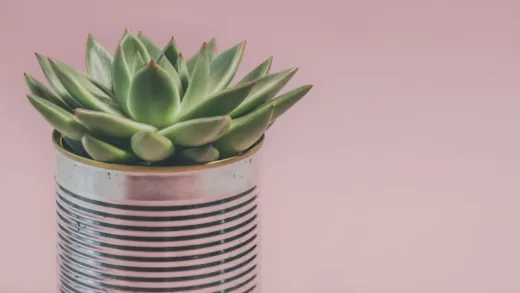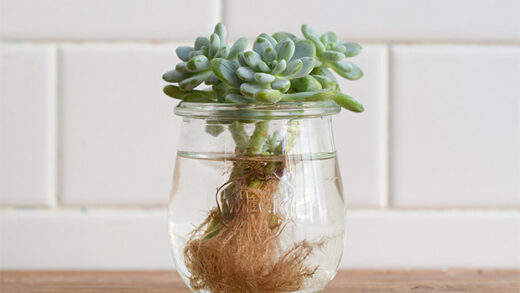Growing indoors can be tricky and complicated — especially when you have to deal with grow room pest control. Both the novice and the experienced grower will eventually have to deal with them. Pests are not limited to bugs, but can range from the tiniest insects to tiny fungi and bacteria. We’ll walk you through how to easily identify, prevent and fight pests.
Table of Contents
Importance Of Grow Room Pest Control
Grow room pest control is important because it allows your plants to grow and thrive without being damaged or killed by pests.
Insects can also transmit grow room diseases that affect the overall health of the plant, which is why growers must stay away from insects. Pests can damage the appearance and quality of fruits and vegetables.
Some pests, such as aphids and leafhoppers, feed on plant sap, while others cause damage by killing stems, chewing leaves, or destroying flowers.
Insects can also harm plants by laying eggs in plant tissue. Also, house mice and other rodents can damage grow room equipment.
Seeing your own plants in such a state can be nerve-racking for the budding gardener. As a result, farmers are not getting the high-quality produce they hoped for, and they are not making enough money.
Growroom pest control is a great solution that can help growers increase yields and obtain high-quality products.
How Do Pests Enter A Grow Room?

Pests are tiny creatures that can easily enter a grow room through tiny cracks, drain holes, vents, windows, and possibly even from your clothing.
Most beginners know nothing about it, and they end up wearing the same clothes for outdoor and indoor growing areas.
Also, it’s a bad idea to introduce new plants without first checking, as growers may end up bringing in pest-infested plants.
Also, pests can lay their eggs in the soil, so it’s important to keep fresh potting soil covered and sealed.
Areas like basements and attics are great for house mice and mice. To keep them from getting too close, make sure there is no food nearby. Fill any small openings or cracks with steel wool and larger openings or cracks with cement. This will ensure that rodents have nowhere to go.
Types Of Pests In Your Grow Room

Before going any further, you need to understand the types of pests you may encounter when growing your plants indoors. These may range from house mice to spiders.
Some of the pests you may encounter in your grow room include:
- aphid
- snails
- house mouse
- Nat Islands
- housefly
- caterpillar
- grasshopper
- Ant
- leafhopper
- scale
- fungus small insect
- slug
- spider mite
- Thrips
- whitefly
Sometimes insects are difficult to see due to the color of their bodies. In this case, growers can use colored paper or a magnifying glass to identify pests.
How To Tackle Pests In Your Grow Room

There are two ways to deal with pests, depending on your preferences and how badly your plants are affected.
- Natural Pest Control:
If you notice pests early on, it’s easier to control the condition and protect your plants.
If you’re an organic gardener who prefers to use non-chemical methods to control pests, there are several organic methods you can use to save your plants. These include the use of essential oils, complementary planting, biological pest control, and more.
- Chemical Pest Control:
If you think pests have started causing serious damage to your plants, you can use chemical pesticides to get rid of them.
Chemical pesticides are often very effective, easy to use, and affordable, making them a suitable choice for beginners.
Selective chemical pesticides kill specific pests while leaving other pests and insects unaffected. On the other hand, one disadvantage of using non-selective chemical pesticides is that they end up killing harmless organisms.
Products Used For Tackling Pests
- Alcohol
A common household item, it is effective against pests such as aphids, red spider mites and mealybugs.
Growers can mix one part alcohol to seven parts water to create a solution that can be sprayed on plants.
Plants should not be watered with alcohol as this may damage or even kill the plant.
- Sticky traps
As the name suggests, sticky traps are basically traps with sticky surfaces that catch insects, bed bugs, and pests.
One disadvantage of using sticky traps is that they only trap insects that fly and stick to surfaces.
Alternatively, you can make your own sticky traps using a piece of colored cardboard coated with a sticky base (such as glue, cornstarch slurry, honey, or petroleum jelly). Just place traps around your houseplants and wait!
- Neem oil
The neem tree is native to India, and its seeds and leaves contain a variety of compounds that are beneficial for pest control and management. It is one of the safest hydroponic pest control products.
The color of neem oil can vary from yellow to brown. Growers can find it in the form of sprays, soil conditioners, concentrates, insecticidal soaps, and more.
Neem oil can help you get rid of locusts, leaf miners, aphids, whiteflies, mites, snails and flies.
When used in small amounts, it is harmless to mammals and is a safe option for indoor gardeners to use around the house. It doubles as a fungicide that growers can use around food crops, fruits, vegetables and herbs.
The only thing to remember is to be careful when using neem oil around drought-stressed plants. In this case, make sure to water well before using.
- Insecticidal soap
Insecticidal soap is one of the most commonly used hydroponic pest control products. It is a safe and effective alternative to harmful chemical pesticides.
These soaps come in spray form and are effective at killing soft-bodied insects such as aphids, mites and scales. They suffocate and dehydrate the soft-bodied insects by injuring their protective coating.
Growers must read product labels before use.
Typically, products carry three labels: WARNING, WARNING, and DANGER. Products labeled “Caution” are generally less harmful than others, and beginners should stick with those used for indoor grow room pest control.
Certain plants are sensitive to insecticidal soaps, so as a precaution, don’t forget to test the product on the leaves to see how it reacts.
- Biological pest control
Biological pest control refers to the use of predators, parasites, competitors or growth chamber disease organisms to control pest populations.
There are three methods of biological pest control:
Import: Import and introduce natural enemies of specific pests into new areas to suppress pest populations.
Enhancement: Periodic/continuous release of natural enemies of specific pests, thereby increasing the number of natural enemies in the area.
Conservation: Protect existing natural enemies of pests by providing ideal habitat.
- Insect smoke bombs
Growers can fumigate their grow rooms with smoke bombs. These bombs release smoke that kills pests, mites and insects when they come into contact.
Smoke bombs are a special way to sanitize and decontaminate your grow room between growing seasons. These bombs come in different sizes and are used in different growing areas.
Be sure to follow the directions when treating the area. In some cases, you may need to take extra precautions if you are using them in a grow tent or small grow room.
People and pets should evacuate the area when bug bombs are used. The best bug bombs for the grow room will not harm the plants in the grow room.
How to Prevent Pests For Soil
Soil should be purchased from a reputable source and checked before use. Sources you can ask about soil questions before buying are the best.
The soil should be airtight, free of pests, and not previously made of any plants or organic matter containing pests. This includes fungi, bacteria and fly/mite eggs.
If you leave the soil exposed to the sun all day, leave it uncovered. Flies can then lay eggs in it, so it should be avoided. Hydroponic applications are not affected by this.
All pots entering the grow room should be thoroughly cleaned with soap and water prior to use. This can be as simple as taking a few tubs each time you’re outside or in the shower, scrubbing, rinsing thoroughly, and drying with a clean towel. Once the process is complete, pot the plant immediately. This will greatly reduce the risk of pests.
How to Detect Bugs in Your Grow Room Early
Pest infestation can be one of the most vexing problems in an indoor grow room. Early detection is key to pest control to prevent unfortunate outbreaks.
Hanging sticky traps in growth chambers can be of great benefit for two reasons.
They can be a good gauge of how many (if any) pests are present in your grow room
The more insects you see caught on the trap, the more insects in the room, so act now. Flystrips or “ribbon” strips can be tacked to the ceiling. These traps spiral downward, creating a landing surface for the flying pests.
Other types of applicators include trays and square sheets. The tray can be placed on any level, such as a table or desk. Square paper can be mounted on a vertical surface like a wall or hung like a ribbon from the ceiling.
Once pests are stuck to the slats, you can take immediate action to prevent an outbreak. Whichever option you choose, be sure to read the directions and warnings on the packaging.
Conclusion
If you’re a first-time grower, the flying insects in your grow tent may surprise you. But don’t worry, with this complete guide to indoor pest control, you’ll be able to have beautiful, healthy plants and say goodbye to those pesky pests!

















